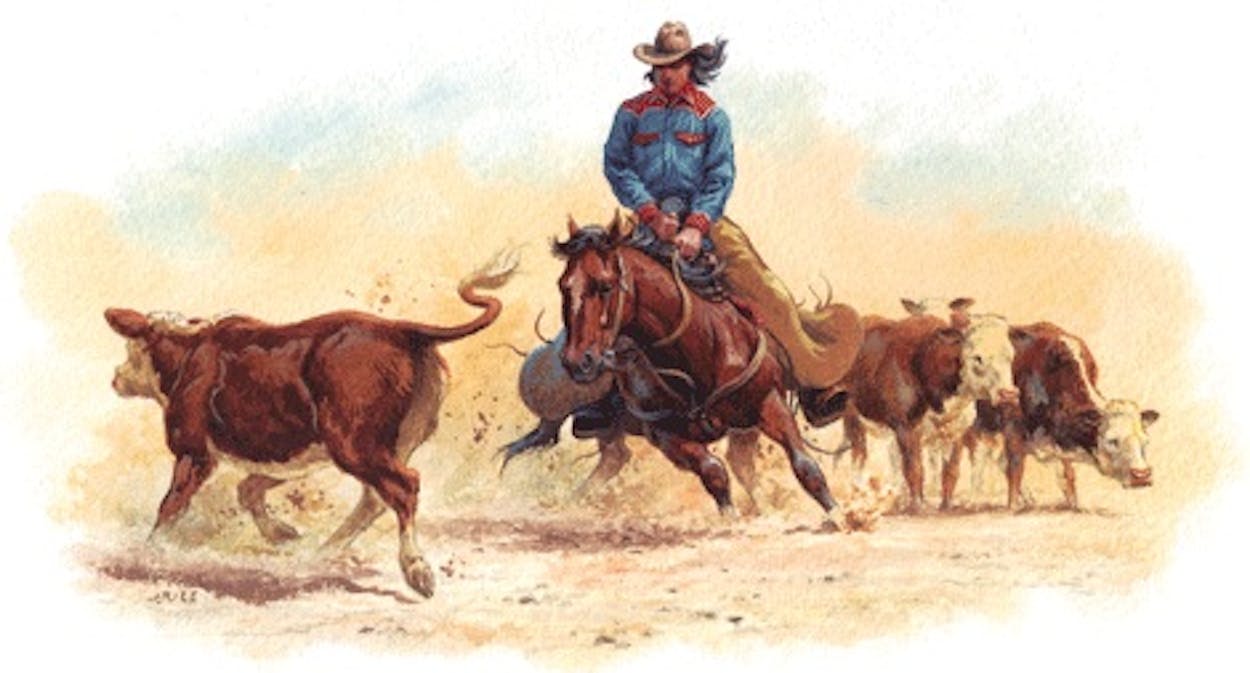When Sam Graves and his 22-year-old bay gelding, Old Hub, beat ten other cowboys to win $150 in the first advertised cutting competition, in Haskell in 1898, he could not have imagined how the sport would evolve. Today the National Cutting Horse Association, which hosts the World Championship Futurity, in Fort Worth, has more than 20,000 members and pays out more than $40 million to its champions. “Cutting is addictive,” says NCHA president Chris Benedict. “I’ve never known anyone to try it just once.” Though the stakes may be higher today, the challenge remains the same. A horse and rider must separate, or cut, a calf from the herd and work the animal to keep it from returning to the group, a skill used on ranches to brand or doctor cattle. “The horse does all the work,” Benedict says with a laugh. “Maybe that’s why people like it.”
The Rider
It’s not easy to be on autopilot while a thousand-pound beast pivots, veers, and breaks from side to side on its own. Once you find a good horse, develop a relationship with the animal so you both can remain calm and confident in show situations (cattle may not be bright, but they sense uncertainty). Though the horse has been taught to act independently, the rider plays a role in the performance as well. “In cutting, balance is key,” Benedict says. Fight the inclination to lean into turns, and learn to sit upright and still.
The Horse
Nothing is more important than the horse: Offspring of champions can sell for up to $750,000. American quarter horses make up more than 90 percent of cutters, primarily because they are stocky, agile, and have a natural desire to compete. Training generally begins at two and continues through the animal’s life. “Most of them have day jobs working cattle at the ranch,” Benedict says.
The Event
When you cross the start line, you have two and a half minutes to cut two to three calves. Without spooking the herd, approach the pack and choose your first calf. Coax the calf out; “throw your hand down,” or drop the reins; and let the horse demonstrate its “cow sense.” If properly trained, the horse will position itself between the herd and the calf and, holding its head low, lean on its haunches, moving back and forth to keep the calf separated. Work the calf to earn points, then repeat the process. If you lose a calf or if you stop working the animal mid-cut, the judges penalize you. Scores range from 60 to 80, with points awarded for style, balance, and horse and rider judgment.








